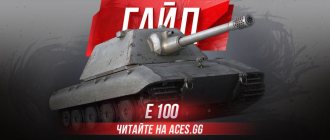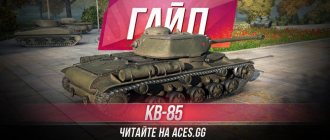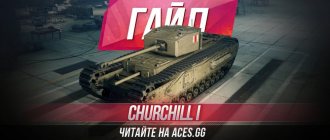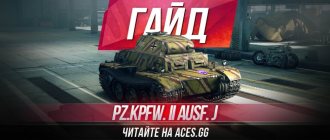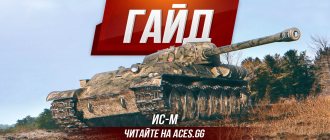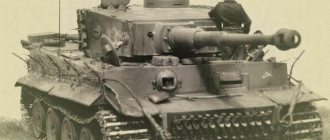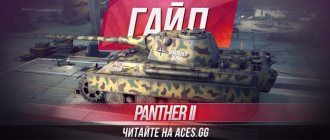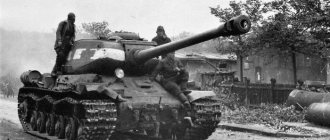The heavy German tank Tiger 2, also known as the Royal Tiger, was supposed to be an indestructible weapon of the Wehrmacht, easily destroying enemy equipment. Its predecessor, the Tiger, was already a formidable enemy for Soviet and allied vehicles, unable to withstand an 88 mm shell.
The new tank was developed for several years, acquired an even more powerful gun and even thicker armor, but this was not enough. Tiger 2 could destroy any vehicle in a duel, but opponents simply avoided such situations, negating all the advantages of the German heavy tank.
History of creation
In August 1942, a task was developed to create a heavy tank that would replace the Tiger Pz.VI Ausf.E heavy tank. It was planned to install a new 88-mm cannon on the vehicle. The design was undertaken by Henschel and the Friedrich Krupp AG plant.
The Krupp plant did not come up with anything fundamentally new - the prototype VK 4502(P) was almost the same as the first Tiger - with the same chassis and power plant, only slightly redesigned to meet new requirements. In other options, it was proposed to use other types of engines, and there were also two layout options - with a rear and a front turret.
However, the project was too expensive, had an unreliable transmission, and was generally unfinished, but several towers were still produced and then installed on production vehicles. Things were better for the Henschel company - their prototype VK 4503(H) was maximally unified with the Panther II tank and better met the requirements.
As a result, when the VK4503(H) model was shown to Hitler in January 1943, he approved it. Until the end of 1943, the first pre-production vehicles were produced, which were called Panzerkampfwagen VI Ausf.B (Sd.Kfz. 182). It was later replaced by the Panzerkampfwagen Tiger Ausf.B or Tiger II.
The unofficial name, “Royal Tiger,” was almost never used in Germany, but it became the most popular among opponents, especially the USSR.
Serial production of the tank began in 1944. According to the plan, 1237 vehicles were to be manufactured, but due to the bombing of factories, the plan was not implemented.
Tower
The 50 towers designed by Porsche were unsuccessful due to their rounded shape at the front. Shells that hit this part often ricocheted and pierced the roof armor. Therefore, a new tower was developed, with a simple straight sheet 180 mm thick at an angle of 10°. Such a simple design at first glance perfectly protected the crew and made it possible not to be afraid of ricochets into the hull roof.
Later, the quality of the head and hull armor decreased significantly due to a lack of nickel; it became too hard and brittle, and lost its toughness.
The turret had not only the traditional commander's hatch with a turret and a loader's hatch on the roof, but also a large hatch at the stern, designed for evacuation, gun replacement, loading shells or ejecting cartridges. A hole in the roof was used for ventilation.
Despite the huge cannon, which almost divided the turret in half, it was very free and comfortable inside, compared to other tanks.
There was a hydraulic drive for turning with work thanks to the main engine with the possibility of manual duplication.
TTX
general information
- Classification – heavy tank;
- Combat weight - 68 tons;
- The layout is classic, transmission at the front;
- Crew – 5 people;
- Years of production – 1943-1945;
- Years of operation – 1944-1945;
- A total of 489 pieces were produced.
Dimensions
- Case length – 7380 mm;
- Length with gun forward – 10286 mm;
- Case width – 3755 mm;
- Height – 3090 mm;
- Ground clearance – 495 mm.
Booking
- Type of armor – homogeneous rolled steel, surface hardened;
- Body forehead, top - 150 / 50° mm/degree;
- Hull side, top - 80 / 25° mm/degree;
- Hull stern - 80 / 30° mm/degree;
- Bottom – 25-40 mm;
- Housing roof – 40 mm;
- The turret forehead is 107 mm for the Porsche turrets and 185 mm for the Henschel turrets, at 10 degrees;
- Gun mantlet – 65-100 mm;
- Tower side - 80 / 20° mm/degree;
- Cutting stern - 80 / 18° mm/degree;
- Tower roof - 40/80-90° mm/degree.
Armament
- Caliber and brand of gun - 88 mm KwK 43 L/71;
- Type of gun: rifled tank;
- Barrel length - 71 caliber;
- Ammunition - 77 or 84, depending on the turret;
- HV angles: −8…+15°;
- GN angles – 360 degrees;
- Firing range - approximately 4 kilometers;
- Sight - telescopic TZF 9d/1;
- Machine guns - 2 × 7.92 mm MG-34 and 1 × 7.92 mm MG-42 (not available on all models);
- Another weapon is the 26-mm Nahkampfgerät mortar.
Mobility
- Engine type – Maybach HL 230, 12-cylinder V-shaped carburetor, liquid-cooled;
- Power – 700 horsepower;
- Suspension type – individual torsion bar;
- Highway speed – 38 kilometers per hour, maximum 41.5;
- Speed over rough terrain – 13 kilometers per hour;
- Cruising range on the highway – 150 kilometers;
- Cruising range over rough terrain – 70 kilometers;
- Specific power - 10.3 hp/ton;
- Climbability – 35 degrees;
- The wall to be overcome is 0.85 meters;
- The ditch to be overcome is 2.5 meters;
- The ford that can be overcome is 1.6 meters.
Tiger II (H) performance characteristics
Traditionally, we’ll start the guide to Tiger II (H) with the parameters of vehicle survival on random fields. Everything looks pretty good here. The tank has a solid safety margin of 1,500 units.
This is a good parameter even by the standards of eighth levels. The base view of the Tiger II (H) is 380 meters. Quite decent for a heavy vehicle, in addition, the value can be improved by crew skills and additional equipment. Tiger II (H) WoT is the proud owner of a decent top speed of 38 km/h. However, the “German” is let down by the ratio of engine weight and power. Therefore, it is very difficult for the heavy weight to accelerate, so maximum speed can only be achieved by accelerating down a hill with a tailwind.
Maneuverability also leaves much to be desired. The armament of the Tiger II (H) looks good, but the gun is not a standard weapon at the seventh level. In particular, armor penetration with a basic projectile is 203 mm; the value can be increased to 237 mm by loading a gold projectile.
The tank's alpha is 240 units, which provides about 1,700 damage per minute.
Thanks to these features, Tiger II (H) promises to be a good source of income. Armor penetration indicators allow you to deal damage to high-level vehicles, which will ensure a stable flow of silver credits into the player’s piggy bank.
It should be noted that the gun has characteristic German accuracy and stabilization. I'm pleased with the mixing time and spread. When it comes to vertical declination angles, the Tiger II (H) gun drops 8 degrees, allowing for effective terrain play.
Information on the characteristics of the Tiger II (H) tank is listed below:
Modifications
In fact, there was only one modification. The first 47 production tanks were produced with a Porsche VK 45.02(P) turret, the rest with a Henschel VK 4502(H) turret.
10 tanks were converted into Panzerbefelhswagen Tiger II command tanks:
- Sd.Kfz. 267 for communications in the “regiment-division” link;
- Sd.Kfz. 268 for company-battalion communications.
Sd.Kfz. 267
Sd.Kfz. 268
Vehicles based on the Royal Tiger
All one vehicle was built on the basis of the PzKpfw VI - the Panzerjäger Tiger, or Jagdtiger, self-propelled gun. It weighed 75 tons, making it the heaviest example of serial armored vehicles in the world. It was based on the chassis of the second Tiger, armed with a PaK 44 cannon. 70-79 self-propelled guns of this type were produced. These vehicles were rarely used, but sometimes they showed themselves to be effective - in one battle the Jagdtiger was able to destroy 19 Shermans.
Use in combat
Immediately after production, the Royal Tigers began to be supplied to tank battalions to replace the Tiger I tank. No new units were created with the second Tigers.
Their first full-fledged battle took place in Normandy, on the Western Front, on July 18, 1944. 26 Royal Tigers, along with regular ones, counterattacked in the Caen area against the British. The Tigers performed well - the British burned 40 tanks, and only three Royal Tigers were lost. By the way, it is curious that the first “Royal Tiger” was destroyed by a ram - a rather rare situation.
For the Allies, the new German tank turned out to be a surprise, and a very unpleasant one at that. Only the Sherman Firefly and American self-propelled guns could fight effectively with it. However, it was possible to knock out the tigers with large artillery and aircraft; air strikes on supply bases and rear areas were especially effective.
Basically, the “Royal Tigers” fought on the Soviet-German front - the first battle took place in August 1944, on the first Ukrainian front, on the Sandomierz bridgehead. During this famous episode, several second Tigers were shot down, although the exact number is difficult to establish. Most of the vehicles were destroyed by the crew of the T-34-85 tank under the command of junior lieutenant P.A. Oskin - he burned at least three German cars. And on the night of August 12-13, two T-34s burst into Oglendow and, due to a surprise attack, received as many as three new “royal” ones, even with full ammunition.
On August 13, 1944, Soviet IS-2s knocked out many Tigers of the 501st heavy tank battalion.
From the autumn of 1944 to the spring of 1945, PzKpfw VI continued to operate on the Soviet-German front in Prussia, Poland and Hungary. The tanks were capricious in operation, inactive and unreliable, but thanks to the 88-mm gun they achieved impressive results, for example, in Hungary. But they were effective only when they were in the right place at the right time.
The last “Royal Tiger” destroyed in battle was knocked out in Berlin, on May 2, 1945, on the Spandau Bridge.
Chassis
The chassis of the Tiger 2 turned out to be controversial. It caused a lot of headaches for its crews and repair teams, but provided good smoothness, maneuverability and cross-country ability.
Despite the fact that the Royal Tiger is often called an overweight vehicle not intended for off-road use, American tests of the captured tank showed that it is superior to many others in cross-country ability, and maneuverability is at a sufficient level.
9 road wheels located on each side in a checkerboard pattern together with wide tracks ensured a reduction in the specific ground pressure compared to its predecessor and improved cross-country ability. At the same time, the design required replacing the tracks with narrow transport tracks when transporting by rail, which significantly reduced the speed of transporting tanks over long distances.
Royal tiger in culture
The Royal Tiger is quite popular in bench modeling - it is produced by the Japanese Tamiya and the Chinese Dragon. Russian models are produced under license from the Chinese. Tamiya has an excellent full-option kit model, with beautiful movements and authentic sounds. You could also get a model of the “Royal Tiger” in 1:72 scale in the September 2013 issue of the “Tanks of the World” magazine.
Pzkpfw.VI Tiger-B 1k35 (Dragon)
The vehicle is also very widely represented in computer games - it can be found in almost any game dedicated to the Second World War, for example, “Panzer Elite Action” or “Call of Duty: World at War”. Tiger II is also present in the online games World of Tanks and WarThunder. Very often, the performance characteristics and use of computer “Tigers” do not correspond to reality at all.
Epilogue
Tiger 2 was the most dangerous tank in duels, thanks to its cannon and armor. Its mobility also made it possible to operate quite confidently on rough terrain, and its design made it easier for the crew to work.
A total of 489 Tiger 2 units were produced, compared to 49,234 Shermans and 84,070 T-34s. The significantly reduced quality of armor and optics towards the end of the war turned the last batches of tanks into pale shadows of their former selves.
Despite this, Tiger 2 earned its place in history as one of the most advanced and dangerous tanks of the Second World War.
Memory of a tank
Today, the Royal Tigers are presented in many museums around the world - in France, Germany, the USA, Switzerland and, of course, in the Russian Museum of Technology in Kubinka. And in England, in the Bovington Tank Museum, there is the only PzKpfw VI with a Porsche turret that has survived to this day.
Royal Tiger With Porsche Tower at Bovington
Photo and video
Jagdtiger
Jagdtiger
Panzerjäger Tiger in Kubinka
Royal Tiger in Kubinka
King tiger captured by US forces
Destroyed Jagdtiger More material on the topic
- M4 Sherman
- New deadly tank T90MS
